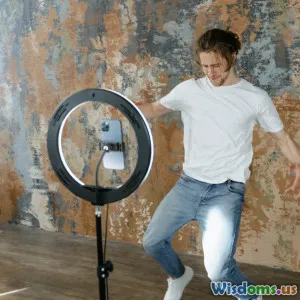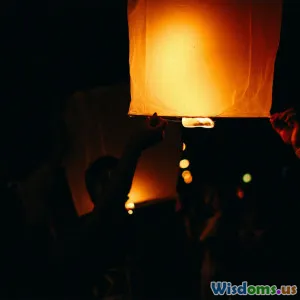
The Impact of Social Media on Filmmaking
7 min read Explore how social media shapes filmmaking, from discovery to distribution, and impacts creators and audiences alike. (0 Reviews)
The Impact of Social Media on Filmmaking
The world of filmmaking has undergone a profound transformation over the past decade, largely driven by the rise of social media. Platforms like Instagram, TikTok, Twitter, and YouTube have not only changed how films are marketed but have also influenced the very nature of filmmaking itself. This article delves into the multifaceted impact social media has on filmmakers and the industry at large, exploring how it has reshaped discovery, audience engagement, and distribution.
1. Revolutionizing Film Discovery
In the past, discovering new films often involved relying on traditional marketing methods, such as trailers, posters, and film festivals. However, with the advent of social media, filmmakers now have the opportunity to showcase their work directly to audiences.
a. Direct Engagement with Audiences
Filmmakers can engage with their audiences on social media platforms, sharing behind-the-scenes content, teasers, and insights into their creative process. This direct interaction allows fans to connect with the filmmakers on a personal level, fostering a community around their work.
For instance, director Ava DuVernay uses Twitter to share her thoughts and engage with her followers, building a loyal fanbase. Similarly, filmmakers can use platforms like Instagram to visually share their work and process, making their projects more relatable and accessible.
b. Viral Marketing
Social media also facilitates viral marketing campaigns. A well-crafted post can reach millions within hours, creating buzz and excitement around a project. Filmmakers can leverage trends and challenges on platforms like TikTok to promote their films in innovative ways. For example, the promotional campaign for “The Blair Witch Project” included a viral marketing strategy that utilized online forums and social media to create an immersive experience even before the film's release.
2. Influencing Content Creation
Social media has not only changed how films are marketed but also how they are made. Filmmakers are increasingly considering the audience's preferences and trends observed on social media when creating content.
a. Short-Form Content
The popularity of short-form video content, such as TikTok videos, has influenced filmmakers to experiment with shorter narratives. Filmmakers are now creating content that can cater to the short attention spans of viewers, leading to the rise of micro-content that can go viral.
b. Diversity in Storytelling
Social media platforms have also played a crucial role in amplifying diverse voices and stories. Filmmakers from various backgrounds are using social media to share their unique perspectives, leading to a more inclusive film landscape. Initiatives like #OscarsSoWhite have sparked discussions about representation in Hollywood, pushing filmmakers to create more diverse content.
3. Changing Distribution Models
With the rise of social media, the traditional distribution model of films is evolving. Filmmakers are finding new ways to distribute their content directly to viewers without relying solely on traditional theaters.
a. Streaming Platforms and Social Media
Social media has become a vital tool for promoting films on streaming platforms. Platforms like Netflix and Hulu have harnessed social media to engage audiences, using targeted ads and influencer partnerships to reach potential viewers.
b. Crowdfunding and Independent Films
Moreover, social media has given rise to crowdfunding for independent films. Filmmakers can use platforms like Kickstarter or Indiegogo to raise funds for their projects, promoting their campaigns across various social media channels to gather support. This democratization of filmmaking allows for more diverse and creative projects to come to fruition.
4. Audience Engagement and Feedback
Social media also enables filmmakers to gather immediate feedback from audiences, which can influence future projects.
a. Real-Time Feedback
Filmmakers can gauge audience reactions through comments and shares, allowing them to adjust their marketing strategies or even content direction based on real-time feedback. This shift towards audience-driven filmmaking enhances viewer satisfaction and engagement.
b. Building a Fanbase
Additionally, social media allows filmmakers to cultivate a dedicated fanbase. Through consistent engagement and interaction, filmmakers can turn casual viewers into loyal supporters, creating a community that eagerly anticipates their future projects.
Conclusion
The impact of social media on filmmaking is undeniable. It has transformed how films are discovered, created, and distributed, fostering a more engaged and diverse audience. As filmmakers continue to adapt to this changing landscape, the possibilities for storytelling and audience engagement will only continue to expand. In this digital age, social media is not just a tool for promotion; it is an integral part of the filmmaking process itself.
Filmmakers and enthusiasts alike should embrace these changes, leveraging social media to enhance their craft, connect with audiences, and bring innovative stories to life.
Rate the Post
User Reviews
Popular Posts





















